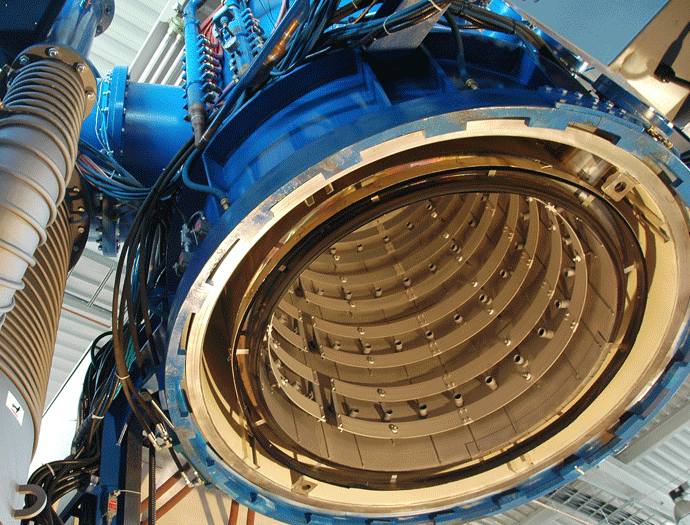Molybdenum hot zones: an energy,cost saving solution[ Info Diffusion:This station | Time:2019-07-09 | Hits:1585 ] |
In an all-metal hot zone,the shielding consists of molybdenum, tungsten or stainless steel. Molybdenum (Mo) is typically used in conventional all-metal hot zones for vacuum furnaces. For the sake of simplicity molybdenum alloy are used conventionally up to 1600 °C both for the resistor and the insulation; tungsten alloys are used for higher temperatures on commercial installations.All-metal hot zones are used in high demand industries where sensitive materials are processed, such as aerospace , electronics and medical. There are heat treatments that require a particularly clean environment or extreme vacuum levels. There may be different reasons: in some cases the chamber’s graphite could interfere with the process, resulting in unwanted carburation of the pieces treated. In other cases, the load could be particularly sensitive to the presence of residues in the oxygen or hydrogen atmosphere (which could lead to embrittlement of the pieces), and so graphite wafer degassing during the cycle could be damaging. In these circumstances, the user should opt for all-metal heating chambers (shields and resistor).
Despite a slightly higher initial investment, all-metal hot zones provide the most economical solution thanks to the following properties:
HOW DO REFLECTING SHIELDS WORK IN A METAL HOT ZONEIn a vacuum heat transfer can be reduced substantially by multiple reflecting shields. A shield is defined as a surface that blocks the transmission of radiation when there is high thermal conductivity and low emissivity. The ability to form a barrier for the hot zone is increased if the shielding is provided by a set of Molybdenum (Mo) minimal-thickness sheets where the innermost sheet in the chamber, which therefore faces the hot zone, is coupled with a given number of similar parallel sheets and where the outermost sheet faces the cold wall of the vacuum vessel. The minimal thickness is required to reduce the heated metallic mass, and does not alter the shielding effect compared to a thicker sheet. The higher the temperature, the more numerous the metallic sheets. The lower the material’s emissivity, the more effective the shield and the lower the energy loss. As well as having the capacity to withstand high temperatures, the molybdenum sheet possesses the fortunate property of having very low emissivity. This feature leads manufacturers to use full molybdenum shielding for the outermost and less hot surfaces as well. This shielding will have the lowest energy loss. Metallic furnaces also feature certain interesting characteristics as regards the load cooling rate. The heating chamber’s ultimate shield, the one facing the vessel’s water-cooled wall, has the same temperature as the hot zone at a higher temperature than the equivalent surface of a graphite chamber. The presence of refractory insulation material and a considerable resistor mass, both in graphite, tends to make the graphite furnace’s hot zone slower during cooling, whilst the cooling rates reached in the all-metal hot zone are greater, at least at the highest temperatures, due to the shields’ higher temperatures but smaller masses. In certain applications this feature leads the heat-treater to opt for a metallic hot zone furnace not so much due to the final vacuum but due to this speed characteristic.
|
| Print | Close |



